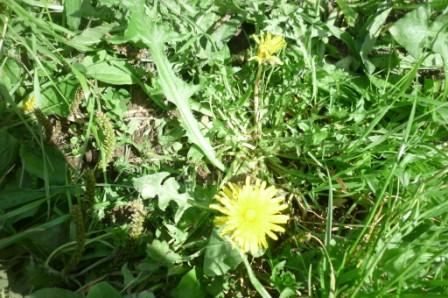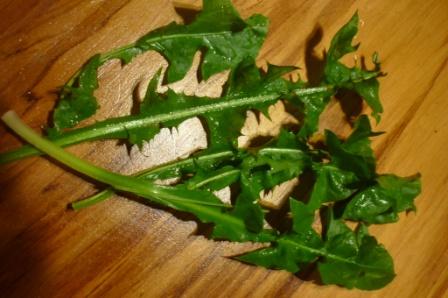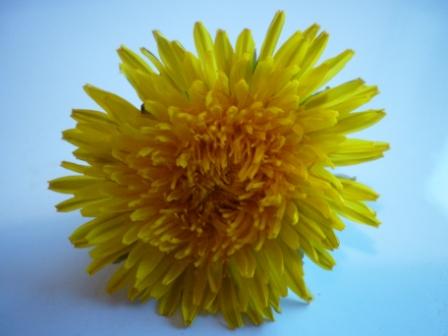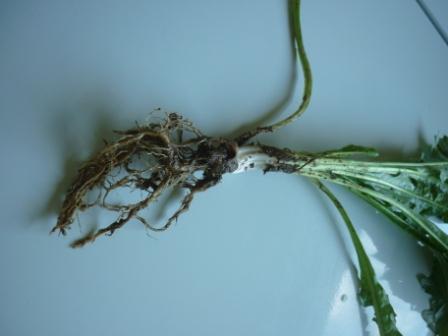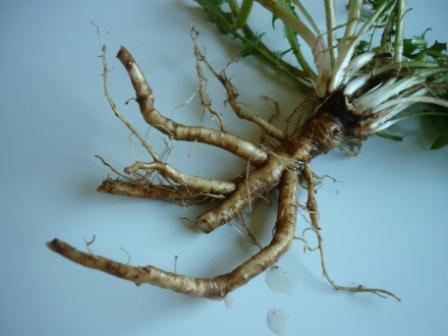 |
|
| > Welcome > Health Reporter > How to Eat a Dandelion
|
|
|
Saturday 26 May 2018 Remember, the only good dandelion is one free from chemical sprays. Identify your dandelion correctly. Avoid busy roadsides because of exhaust fumes. Check the spray free status of your source if you choose to experiment. This article is for education purposes only.On a bright summer's morning we stood in our garden patch looking at a handsome dandelion plant. Yes, this was the day we had appointed as Dandelion Eating Day. We were a little hesitant. I mean, how bitter is bitter once we start chewing? We had a history of disliking bitter tastes. We had grown handsome Italian lettuces, year after year, only to haul them out by the roots once we had tasted a bitter leaf. But then...in late summer 2018, God turned my attention to the incredble healing power started by bitter tastes in the mouth. Dandelions seemed the best place to start our new adventure into bitter tastes. (I hadn't grown any bitter lettuces.) Yes, all Parts of the Dandelion are EdibleThe entire Dandelion plant is edible. From the creamy coloured roots, to the serrated leaves, the hollow stalk and the strong golden flower of many petals. More than 1000 years of use by millions if not billions of people as food and medicine is a pretty strong case for at least trying to Eat a Dandelion, don't you think? But, I'm all for research and making informed decisions, so you might like to read the next post: Why Eat a Dandelion? Dandelion LeavesDandelion leaves are indented and resemble lion's teeth, in French “dent de lion”. Not that I’ve ever looked closely at a lion’s teeth, though I do wonder what lion’s breath would be like. Anyway... The young plant at first grows into a small rosette of dainty leaves. As the plant grows, the leaves multiply and the older leaves grow larger. I’ve seen leaves about 20-25 cm long (7-10 inches). The rib running down the back of the leaf is smooth and raised, sometimes pinkish in older, tougher leaves. How to Eat Dandelion LeavesIdentify Dandelion plant, free of chemical sprays. Pick Dandelion Leaves. Give them a little rinse or spray with a handy water bottle and EAT. Just like that, the easiest way. I like a little handful in the morning after my walk. Yes of course, delicious in a mixed salad too. You can also cook the leaves, but after 8 weeks of eating leaves raw, I wouldn’t bother. I have grown to love and look forward the bitter taste of the raw leaves. The leaves look like this:
Dandelion FlowerWhen the plant has produced at least 20 leaves, and the temperature and light is right (the dandelion tolerates a huge range of growing conditions), the plant produces a shortish stalk, which is hollow. And if you break this full grown stalk there will be a white sap, which I’ve heard is quite good at clearing up facial spots. Yet to try that one. In the early stages the stalk is quite short with a tightly closed but small but strong bud. If the next couple of days are bright and warm for the area, the stalk grows quickly, and then joy of joys, a beautiful golden yellow, closely petalled flower opens. Yes. You can eat the flower. Yes, it is somewhat sweet, as the flower produces nectar, more in the warmer weather, and the bees love to visit them. So I just pick one of two and leave some for the insects and bees. The nutrition in the flower is just as good as the leaves or root. See the next post: Why Eat a Dandelion? How to Eat a Dandelion FlowerIdentify Dandelion plant, free of chemical sprays. Pluck Dandelion Flower from plant. Give a little rinse or spray with a handy water bottle and EAT. Just like that, the easiest way. You can also make a tea by pouring 2 cups of boiling water over a handful of flowers and leaving to steep for 10 minutes. (That’s my method). You can pluck the petals from the flower and add to salad, vegetable or fruit. You can use the flowers to decorate, and then eat them to amaze your guests. The flower will not taste sweet to you if you are used to eating highly sweet food often. Strangely, as I have become accustomed to bitterness, my desire for sweet tastes has decreased, and I naturally look to savoury tastes more often. The flower looks like this (then I ate it):
Dandelion RootTo dig a dandelion, you will need at least a modest digging implement. The one we use is called the "hobbit spade" because I am quite short and not very strong, and the hobbit spade is mine. A longer stronger spade will help you dig out more of the tapering, branched, creamy coloured root. How to Eat a Dandelion RootIdentify dandelion plant correctly, dig from a place with relatively clean soil - no sprays, no busy roadsides. Use common sense if you choose to experiment. Choose a dandelion plant with strong vigorous growth, with at least a few older leaves - as this will give a larger root. In the photo below you can see a young dandelion plant with only a little root system. The next photo shows an older plant with a much larger root system. Wash the soil off the dandelion root in fresh, clean, water (chlorine free if you can). Little slices do taste bitter. If you want to make roasted dandelion for a tea resembling coffee, you will need a LOT more. A wheelbarrow full of dandelion root will result in a 400 gram jam jar of dandelion coffee. That's why Organic Roasted Dandelion Root costs nearly $100/kg in New Zealand. We buy a 500 gram bag every three months from Goldenfields.co.nz And if you happen to have a wheelbarrow full of dandelion roots, go here to eatweeds.co.uk to make your own roasted dandelion root. That's the process we used to make ours. The young roots look like this - fiddly to use for a Roasted Dandelion project: Compare the young roots (above) with the older roots (below): You now know How to Eat a Dandelion - next post Why Eat a Dandelion?
Posted: Sat 26 May 2018 |
|
|
